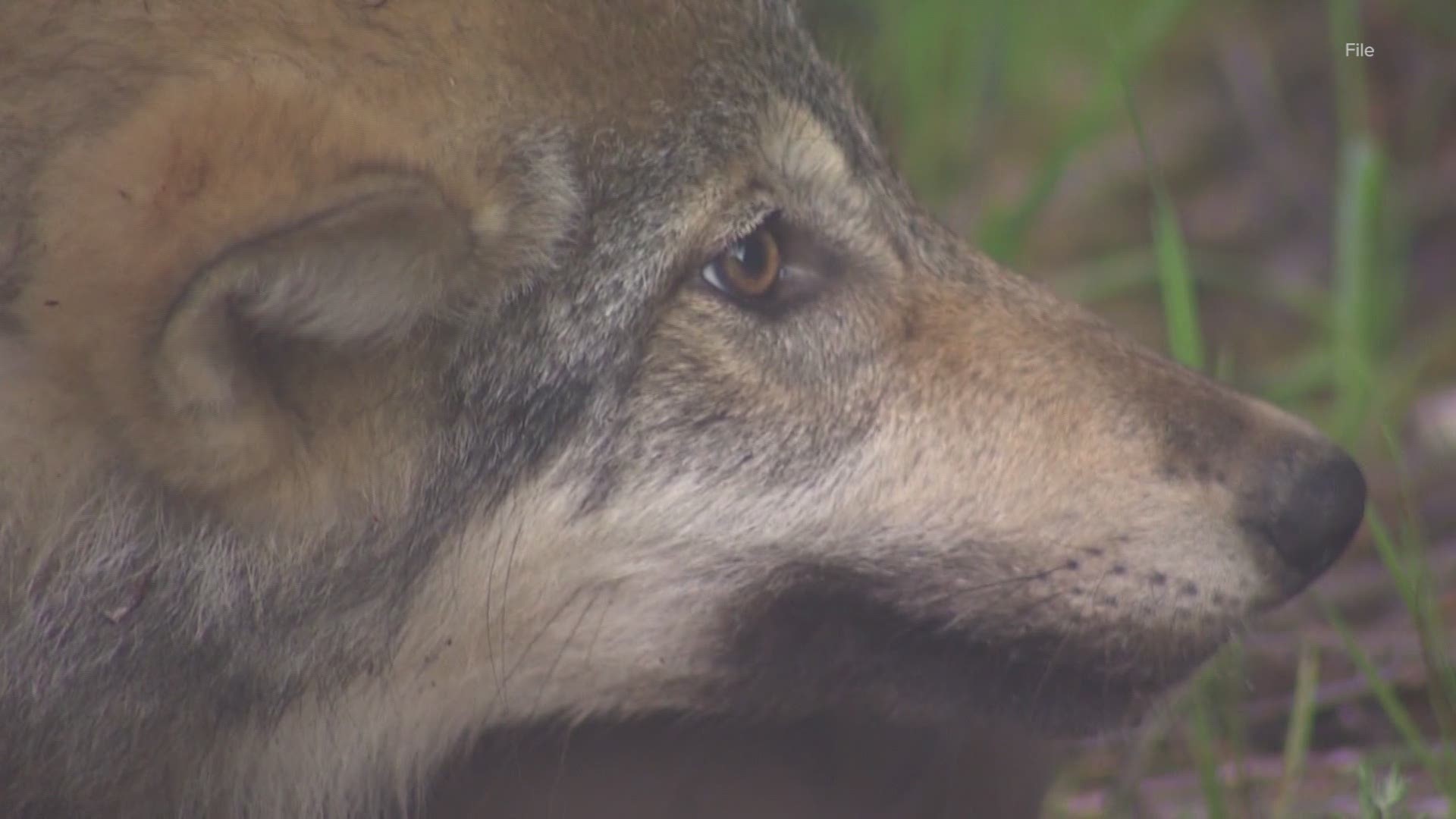SEATTLE — With Idaho moving to significantly reduce its wolf population, officials in Washington expect limited impacts on the state’s recovering packs, some of which range across state lines.
Lawmakers in Idaho passed a measure to expand the ways wolves can be killed in April, including hunting on snowmobiles, ATVs, and using night-vision equipment. Republican Governor Brad Little signed it May 7.
Reports say it could reduce the population of 1,500 to as low as 150 wolves in an effort to reduce attacks on livestock, and expand deer and elk herds.
Conversely, neighboring Washington is still working to recover gray wolf populations.
Ben Maletzke, statewide wolf specialist for the Washington Department of Fish and Wildlife, was in the North Cascades Tuesday trapping for wolves to fit with radio collars. He said while states manage wolf populations independently, they know animals from some Eastern Washington packs do cross into Idaho.
That can include animals from the Salmo and Skookum packs in the Northeast corner of the state. A collar in Grouse Flats pack, which also borders Idaho, doesn't tend to range into the state. But the Diamond Pack, which was identified in Washington in 2009, actually moved their territory fully into Idaho as of the 2015 survey.
Still, Maletzke estimates less than a dozen wolves could be impacted by the new law.
“It’s probably not going to have a significant impact on the wolves that are already here in the state,” he said. “Where there may be some impact would be the immigration that we would see from packs that are already established in Idaho. If there's a high mortality, there's obviously less chance for those wolves to disperse and move into Washington to help the recolonization effort."
Gray wolves are protected in Washington as an endangered species, after they were nearly wiped out in the early 1900s. The first breeding pack since then was discovered in 2008, and wolves have seen 12 years of steady growth since.
At the end of 2020, officials with Washington Fish and Wildlife recorded at least 132 wolves across 24 packs, with 13 breeding pairs. The Confederated Tribes of the Colville Reservation reported 46 animals across five packs. At 178, it’s a marked increase from the 145 wolves recorded in 2019.
Gray wolves have never be reintroduced to Washington, WDFW said. They are returning wholly on their own from other populations.
Wolves cast a controversial figure in the West. Seen as an important natural part of the landscape by advocates, they’re a villain to ranchers who complain of cattle predation.
While wolves are protected, WDFW does kill animals that repeatedly prey on cattle - several dozen in the last 13 years.
The new Idaho decision comes after the Trump administration removed federal Endangered Species Act protections for gray wolves nationwide last October, sparking outcry among wildlife activists.
The Center for Biological Diversity vowed to sue. Just last week, it shared a letter endorsed by 115 scientists asking the Department of Interior to restore protections.
Robert Wielgus, the retired director of the Large Carnivore Conservation Lab at Washington State University, signed the letter.
Though the date is nebulous, WDFW's eventual plan is to de-list wolves in Washington. The agency is currently designing that process.
In the meantime, Maletzke said state officials will continue to follow the current wolf plan, including the latest goal of establishing four breeding pairs in the South Cascades.
"This past year was our first year to have four successful breeding pairs in the North Cascades, and we've had it in the Eastern recovery region for quite some time," he said. "We're getting closer every year, we're inching closer to the recovery goals to start that down listing process."

